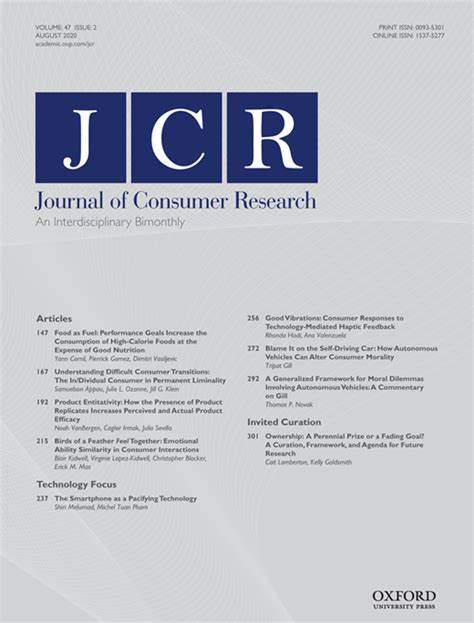统治与声望阶层:社会阶层基础如何塑造引人注目的消费
IF 6.4
1区 管理学
Q1 BUSINESS
引用次数: 1
摘要
众所周知,消费者会寻找并展示显眼的商品——这些商品是独一无二的,象征着财富和崇高的社会地位。尽管有许多因素可以推动这种炫耀性消费,但目前的研究着眼于一个尚未探索的因素:消费者是否发现自己处于一种基于统治地位与声望的等级制度中。基于支配地位的等级制度鼓励消费者使用威胁、自信和操纵行为来驾驭等级制度。相比之下,基于声望的等级制度鼓励消费者展示他们的才能、技能和在等级制度中运作的动机。本研究揭示了这两个层次的主要基础是如何塑造消费者对炫耀性商品的消费的。具体而言,相对于声望等级制度,支配地位被认为是为了培养更大的社会焦虑,这导致人们寻求显眼的商品作为心理安全的手段。因此,相对于基于声望的等级制度,基于统治地位的等级制度更有可能鼓励炫耀性消费。多项实验利用了真实员工的行为、对等级制度的实验操作,以及激励相容的决策,结果表明,相对于基于声望的等级制度,基于支配地位的等级制度会增加消费者对显眼商品的偏好。此外,社会焦虑形式的心理机制的证据是通过中介和适度来证明的。本文章由计算机程序翻译,如有差异,请以英文原文为准。
Dominance versus Prestige Hierarchies: How Social Hierarchy Base Shapes Conspicuous Consumption
Consumers are known to seek out and display conspicuous goods— items that are exclusive and signal wealth and high social standing. Though many factors can drive such conspicuous consumption, the present work looks at an unexplored element: whether consumers find themselves in a dominance versus prestige-based hierarchy. Dominance-based hierarchies encourage consumers to use threatening, assertive and manipulative behaviors to navigate the hierarchy. In contrast, prestige-based hierarchies encourage consumers to show their talent, skills and motivation to operate within the hierarchy. The present research reveals how these two main bases of hierarchy shape consumers’ consumption of conspicuous goods. Specifically, dominance, relative to prestige hierarchies, are proposed to foster greater social anxiety, which leads people to seek conspicuous goods as a means of psychological security. Consequently, dominance-based hierarchies are more likely to encourage conspicuous consumption relative to prestige-based hierarchies. Multiple experiments, which utilize real employees’ behaviors, experimental manipulations of hierarchy, as well as incentivize-compatible decisions, reveal that dominance-based hierarchies, relative to prestige-based hierarchies, increase consumers’ preference for conspicuous goods. Moreover, evidence for a psychological mechanism in the form of social anxiety is demonstrated via both mediation and moderation.
求助全文
通过发布文献求助,成功后即可免费获取论文全文。
去求助
来源期刊

Journal of Consumer Research
BUSINESS-
CiteScore
12.00
自引率
9.70%
发文量
53
期刊介绍:
Journal of Consumer Research, established in 1974, is a reputable journal that publishes high-quality empirical, theoretical, and methodological papers on a wide range of consumer research topics. The primary objective of JCR is to contribute to the advancement of understanding consumer behavior and the practice of consumer research.
To be considered for publication in JCR, a paper must make a significant contribution to the existing body of knowledge in consumer research. It should aim to build upon, deepen, or challenge previous studies in the field of consumption, while providing both conceptual and empirical evidence to support its findings.
JCR prioritizes multidisciplinary perspectives, encouraging contributions from various disciplines, methodological approaches, theoretical frameworks, and substantive problem areas. The journal aims to cater to a diverse readership base by welcoming articles derived from different orientations and paradigms.
Overall, JCR is a valuable platform for scholars and researchers to share their work and contribute to the advancement of consumer research.
 求助内容:
求助内容: 应助结果提醒方式:
应助结果提醒方式:


